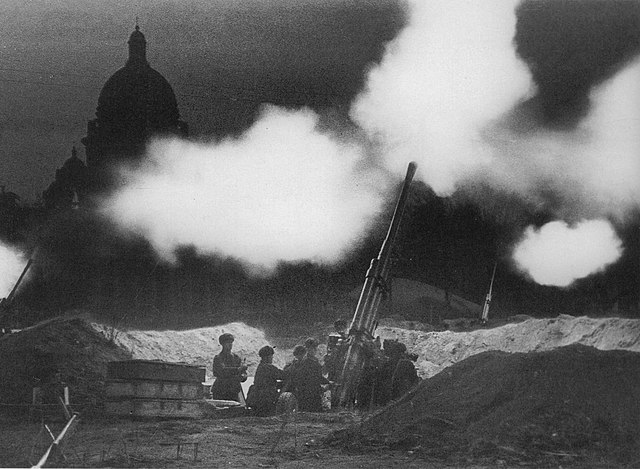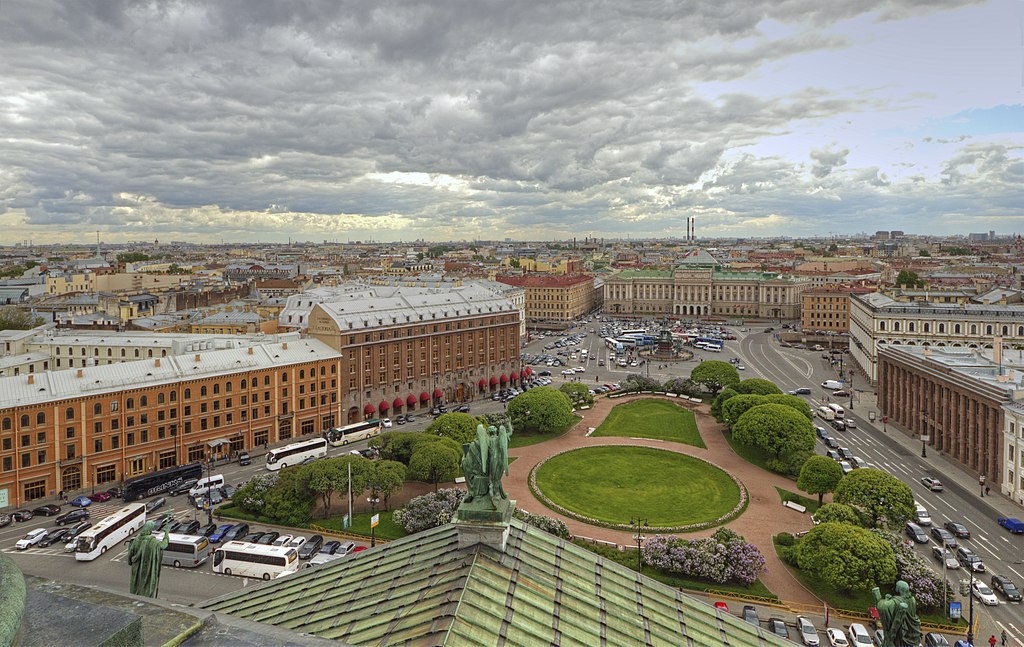On 8 Sep 1941, German forces began their siege of Leningrad that would last 872 days making it one of the most grueling sieges in modern warfare. Let’s find out more about it.

Public Domain via Wikimedia Commons
Leningrad (formerly known as St. Petersburg and capital of Russia before the Communist takeover in 1918), was a major industrial center and the Soviet Union’s second largest city. When Germany in June 1941, many of the city’s industrial plants and inhabitants were relocated far to the east to prevent capture. Two million were left behind though to face the rapidly moving German army. Everyone who could lift a shovel (men, women, and children) were conscripted to build anti-tank fortifications around the city’s edge. The railway to Moscow was cut off at the end of July by German forces and they were starting to penetrate the outer fortifications of the city. On 8 September, German forces began besieging the city but were held back by the fortifications and the tenacity of the defenders, some 200,000 Red Army soldiers. German bombers destroyed a warehouse containing food making life more difficult for the defenders.
Germans next moved to seal off the remaining highways and rail lines south of the city. Finnish forces joined the Germans by coming down the Karelian Isthmus in the north so that by November the entire city was encircled. German bombings intensified with raids several times a day. Most people were reduced to eating one slice of bread per day and starvation was rampant. One of the coldest winters on record would set in as well adding to the misery of the inhabitants. Many continued to work to produce arms to help defeat the Germans despite the lack of food and warmth as well. Just about anything that could be burned for heat was used from books to furniture. Pets (dogs and cats) were eaten along with animals from the city zoo. Wallpaper paste was used for food and leather boiled to make an edible jelly. Plants, grasses and weeds were put to use to produce vitamin supplements. Cannabilizing the dead was a major issue resulting in the Leningrad police department having a special unit to handle it.
Some supplies were able to be brought in over Lake Ladoga, but it was very small and not enough to alleviate the conditions in the city. Some were evacuated-mostly elderly and children-but many were unable to leave and starved and or froze to death. In June 1943 the Soviet Army was able break through the German blockade and establish a better supply line along the shores of Lake Ladoga. The city was kept alive through this and later an oil pipeline and electric cables were connected to the city despite the ongoing siege. When spring came in 1943, land was put to use so that by summer produce could be grown. The siege would end when the Soviet Army forced the German army to retreat in January 1944. The siege ended but the human toll was enormous. Over a million died. Survivors got the Order of Lenin in 1945. The population of Leningrad (now renamed to St. Petersburg) did not regain its former population of three million until the 1960’s.
St. Petersburg, Petrograd, Leningrad?
St. Petersburg was found in 1703 by Tsar Peter the Great and named after the apostle St. Peter. Until 1918, it served as capital of the Russian Empire when it was moved by the Bolsheviks to Moscow. The city was both a cultural center as well as the capital in old Russia. At the outbreak of World War I in 1914, the city was renamed Petrograd because of the strong anti-German sentiment and the fact its name contained two German words. In 1924 after Lenin’s death, the city was renamed for him, Leningrad. In 1991 a public referendum approved the renaming of the city back to St. Petersburg. The city is a major tourist destination owing to its cultural and historical significance. An old guidebook reminds the city is spread out, so be prepared to spend time going to and from the various historical sites. Summers can be warm and sometimes rainy (bring waterproof jackets and something to wear if it gets chilly as well). Winters are cold, so bring cold gear. Surprisingly St. Petersburg is not as cold as Moscow during the winter.

2012
A.Savin via Wikimedia Commons
Sources:
Dean, Mack. “Siege of Leningrad | World War 2 Facts.” World War 2 Facts, October 21, 2020. http://www.worldwar2facts.org/siege-of-leningrad.html.
———. “Siege of Leningrad | Nazi Germany, World War II, Blockade.” Encyclopedia Britannica. Last modified September 1, 2024. https://www.britannica.com/event/Siege-of-Leningrad.
———. “Siege of Leningrad Begins.” HISTORY, September 2, 2020. https://www.history.com/this-day-in-history/siege-of-leningrad-begins.

